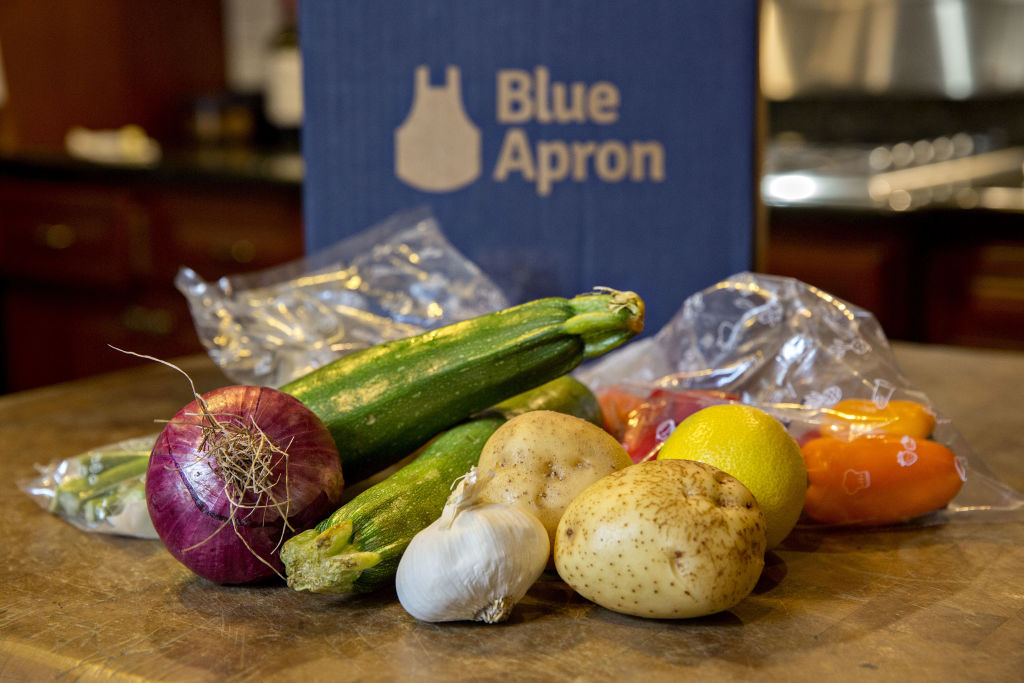
By Jill Filipovic
According to the Trump administration, the poor could really use a meal-kit service like Blue Apron. In theory… sure! Easier access to more nutritious food is a great idea, and could be part of a broader social service package aimed at reducing poverty and improving health.
Unfortunately, that is not what we’re talking about here: before you get any crazy ideas that the “Blue Apron-type” solution is part of a broader compassionate scenario coming out of this administration, let’s take a look at Donald Trump’s budget numbers. They tell a different story.
The Trump budget is fundamentally about shredding the already-flimsy American social safety net that is intended to help the poor.
It proposes slashing Medicaid, federal housing subsidies, health insurance, and food stamps by billions of dollars. Food stamps, technically called the Supplemental Nutrition Assistance Program (SNAP), face a $17 billion cut in 2019 alone, and stand to lose $213 billion over the next 10 years.
This is in a country where more than 13 million children don’t get enough food. The supposed “pro-life” Republican Party, tellingly, backs Trump’s budget, and shrugs at the reality of kids going hungry. This is not surprising, of course: the GOP has a long history of stigmatizing those who receive food stamps as lazy, undeserving or, as Ronald Reagan so famously put it, “welfare mothers” gaming the system.
And so we have the Trump proposal of an “American Harvest Box,” which is nothing akin to Blue Apron. If only it were. To start, nothing in the box is actually recently harvested — the proposal includes zero fresh fruits and vegetables and no fresh meat, fish, or poultry. Instead, the “homegrown” food the poor would get in their box would include processed cereals and canned sodium-saturated goods.
And unlike Blue Apron, where consumers get to choose their meals, the Trump plan would simply send poor people a sad box of bland, repetitive basics.
Currently, SNAP benefits are loaded onto a card, and recipients can decide for themselves what to purchase. Now, the government would do much of the deciding. The box would be valued at about half of the SNAP recipients’ monthly benefit, reports CNN. The remainder of their benefits would be given to them on electronic benefit cards, as before.
Let’s recall here that Michelle Obama couldn’t even promote healthier school lunches without right-wing outcry about the nanny state; when Trump literally wants the government to select, box up and deliver food of questionable nutrition for the poor, we hear agriculture Secretary Sonny Perdue praising the plan as “a bold, innovative approach.”
The United States faces an odd epidemic: Enormous numbers of people who are both food-insecure and saturated with processed, nutritionally-deficient items that can only be loosely considered “food.”
Big Food (America’s packaged food companies) has been remarkably successful at driving down the cost of sugary cereal, salty fatty snacks, processed items; increasingly, these companies bill these foods as “healthy.”
The Trump administration’s fondness for big business suggests that the “American Harvest Box” may be less about the health of those who eat what’s in it and more about providing a way to sell the same processed junk already driving disproportionate rates of diabetes and disease in poor communities.
Combating that means making fresh, healthy foods more easily accessible in low-income communities, while also working to educate people on basic nutrition and how to read a food label. And it means a holistic look at what drives less-than-ideal food choices.
A major factor is time: Many low-income parents work multiple jobs, or jobs where scheduling is at the whim of the employer, making it impossible to plan one’s week, from childcare to meal plans. When your time is already stretched thin and you don’t see your kids as often as you would like, of course you reach for the packaged, processed dinner rather than spending a precious hour chopping, cooking, and cleaning up.
And then there is the simple fact that junk food is one indulgence low-income parents can offer. “Next to all the things poor parents truly couldn’t afford, junk food was something they could often say ‘yes’ to,” Priya Fielding-Singh, a Stanford doctoral candidate, wrote in the Los Angeles Times.
This is not particularly different from what financially comfortable parents do with their kids — saying “yes” to junk food “treats.” The difference is they have the money to make another choice if they want to. And the poor, by the way, are less likely to eat fast food than the American middle class, according to a recent study by two economists — and probably less likely than the President, too, with his well-known fast food diet and indulged child’s palate.
The solution needs to move beyond having more greengrocers in poor areas, and certainly beyond prepackaged food boxes. “If low-income parents had the resources to consistently meet their kids’ desires,” she wrote, “maybe a bag of Doritos would be just a bag of Doritos, rather than a uniquely potent symbol of parental love and care.”
In other words: To truly improve the lives of the poor, we have to lift people out of poverty, and that requires expanding the safety net, not shrinking it. Instead, Trump, who reportedly enjoys treating himself to an extra scoop of ice cream after dinner every night, proposes cutting billions in social support and health care, and delivering sad boxes of cereal and canned meat.
That’s not “Blue Apron for the poor.” It’s crumbs for people Trump and his ilk have determined are deserving of little more than table scraps.










